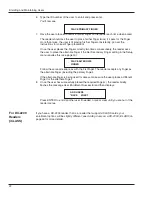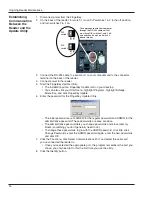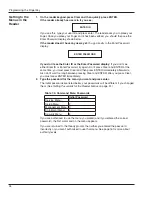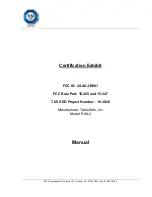
25
Ongoing Reader Maintenance
Cleaning Readers
FingerKeys recognize a user’s fingerprint by reflecting light off the finger. The reader
forms a mathematical “image” of the user’s fingerprint based on how the light reflects
back. If the sensor window is dirty, the light won’t correctly reflect back so the image
generated won’t match the user’s fingerprint. When this happens, the image the reader
sees is different from the fingerprint template stored in the reader. This causes the reader
to not recognize the user’s finger. The solution is simple: regularly clean the window. This
enables a clear image of the fingerprint that the reader can recognize.
Spray any ordinary, non-abrasive window cleaner on a clean soft cloth. The cloth should
be damp but not wet or dripping. Use the damp cloth to wipe the plastic window to the
right of the display. Pay special attention to the corners and edges of the window where
dust may collect. Wipe the rest of the reader when done.
• Never spray cleaning fluid directly onto the reader! Always spray a cloth and then wipe
the reader with the cloth. If you spray the cleaner directly on the reader, the cleaning
fluid can drip on the main circuit board; this could cause a short and ruin the board.
• Make the cleaning cloth damp but not wet! If the cloth is wet, this can cause the same
problems as if you spray the cleaner right on the reader.
• Never use an abrasive or gritty cleaner! An abrasive cleaner could scratch the
surfaces.
A reader in a clean environment with light usage might only need to be cleaned once a
month.
A reader in a dirty environment or a reader with heavy use should be cleaned once a
week.
If a reader is having problems recognizing users, cleaning the reader usually eliminates
the problem.
Why Readers
Need to Be
Cleaned
How to Clean a
Reader
How Often
Readers
Should Be
Cleaned
















































